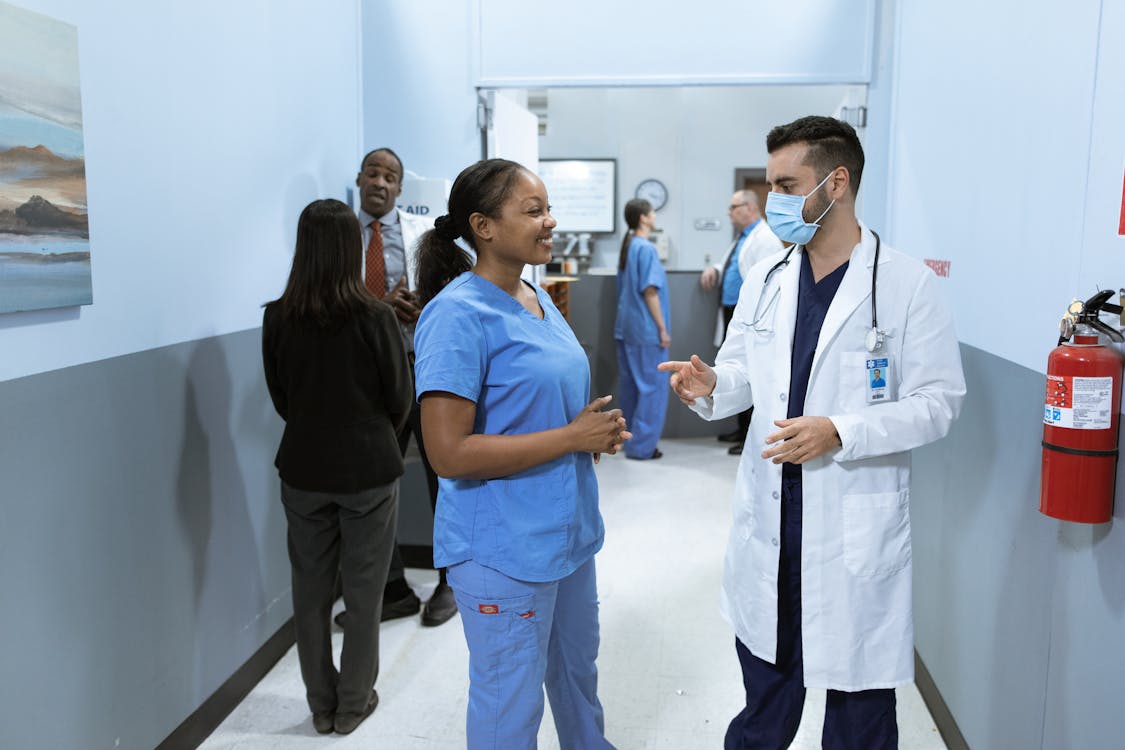Apr 3
2023
6 Tips to Run a Healthcare Facility Efficiently

Running a healthcare facility, whether a hospital, clinic, or medical practice, requires efficient management to ensure the highest level of patient care while controlling costs. In today’s fast-paced healthcare industry, healthcare leaders face unique challenges that can impact the efficiency and effectiveness of their facilities.
Therefore, this blog explores practical tips to help healthcare facility managers streamline operations, optimize workflows, and enhance patient outcomes. Whether you are a seasoned healthcare professional or new to the industry, these tips will provide valuable insights on running a healthcare facility efficiently.
1) Focus on Staff Development
Providing ongoing training and development opportunities for staff is essential to ensure that they have the knowledge, skills, and ability to deliver quality care. Staff development programs can increase staff engagement, job satisfaction, and retention rates, improving patient outcomes and reducing recruitment and turnover costs.
You should also deliver staff development programs such as the following.
- Cross-training can be particularly effective in healthcare, as it allows staff to develop new skills and work in different areas of the facility.
- Leadership training is also essential, as it can help to develop strong, influential leaders who can motivate staff, improve processes, and drive innovation.
- Continuing education is critical to ensure that staff stays updated on the latest trends and best practices.
- Mentorship programs can provide staff guidance, support, and career advancement opportunities.
2) Use Technology
One of the most significant technological advancements in healthcare is healthcare artificial intelligence (AI), which has proved to be a powerful tool in improving patient outcomes and reducing costs.
There are several ways to use healthcare AI to improve the efficiency of healthcare facilities, as listed below.
- Implementing electronic health records (EHRs) allows healthcare providers to access patient information quickly and easily, reducing the need for manual data entry and paper-based records. EHRs also enable providers to track patient progress, monitor medication adherence, and identify potential health risks.
- Telemedicine allows patients to receive care remotely via video conferencing, chatbots, or other digital platforms. Telemedicine is particularly useful in rural areas or for patients with mobility issues, reducing the need for travel and wait times.
- Machine learning algorithms can analyze large datasets to identify patterns and correlations that humans may miss, leading to an earlier and more accurate diagnosis. AI-powered diagnostic tools are already used for conditions such as skin cancer, retinopathy, and pneumonia.
- Wearable devices and remote monitoring systems can continuously monitor vital signs and other health metrics, alerting healthcare providers to potential issues before they become serious.
3) Establish Clear Communication
Effective communication channels among staff, patients, and their families to ensure everyone is informed and up-to-date. With clear communication, patients can be more involved in their care, staff can work together more effectively, and potential issues can be addressed before they become significant problems. You can foster clear communication through regular meetings, training, messaging systems, and other communication tools.
4) Monitor Performance
Monitoring performance is vital to measure key performance indicators (KPIs) such as patient satisfaction, wait times, and staff turnover to identify problem areas and track progress over time. Regularly monitoring these KPIs will help healthcare facility managers make informed decisions and take necessary actions to improve the quality of care provided.
You must also set achievable performance targets and align them with the overall mission and goals of the facility. You can track these targets with a dashboard or scorecard to visually represent the facility’s performance in different areas.
Comparing your facility’s performance with others can also provide valuable insights into best practices and areas for improvement.
Staff should also be involved in the performance monitoring process by providing regular feedback and suggestions for improvement. This step can create a continuous culture of improvement and accountability, leading to better patient outcomes and higher staff morale.
5) Manage Finances
Financial management can help healthcare providers streamline operations, improve patient care, and maintain profitability. Below are a few tips for managing finances in a healthcare facility.
- Develop a budget and stick to it. So, forecast expenses and revenues and identify areas where you can reduce costs.
- Negotiate with vendors and suppliers to obtain the best prices for equipment and supplies and explore bulk discounts.
- Healthcare providers should establish effective revenue cycle management (RCM) processes to ensure timely and accurate billing and collections. RCM involves monitoring key performance indicators such as days in accounts receivable, denial rates, and net collections and implementing strategies to improve these metrics.
- Healthcare providers should regularly review their financial performance and adjust their strategies accordingly. Thus, you must analyze financial statements and reports, identify trends and patterns, and develop action plans to address any issues.
6) Implement Infection Prevention Aand Control Measures
Infections acquired in healthcare settings can have severe consequences for patients, including prolonged hospital stays, increased morbidity and mortality, and increased healthcare costs. Below are some effective infection prevention and control measures.
- Promote proper hand hygiene through education, and provide hand sanitizers and hand washing stations.
- You can improve environmental cleaning and disinfection by using effective cleaning agents, standardized cleaning protocols, and routine auditing.
- The appropriate use of PPE, such as gloves, masks, and gowns, can be reinforced through education and training programs, and by ensuring that PPE is readily available and properly fitted for staff.
Conclusion
Running a healthcare facility efficiently requires careful planning, effective communication, and a commitment to continuous improvement. By implementing the tips discussed in this article, healthcare providers can improve patient outcomes, reduce costs, and stay competitive in a rapidly changing industry. Ultimately, success in healthcare requires a dedication to excellence, a willingness to adapt to new challenges, and a steadfast commitment to providing high-quality care to those who need it most.